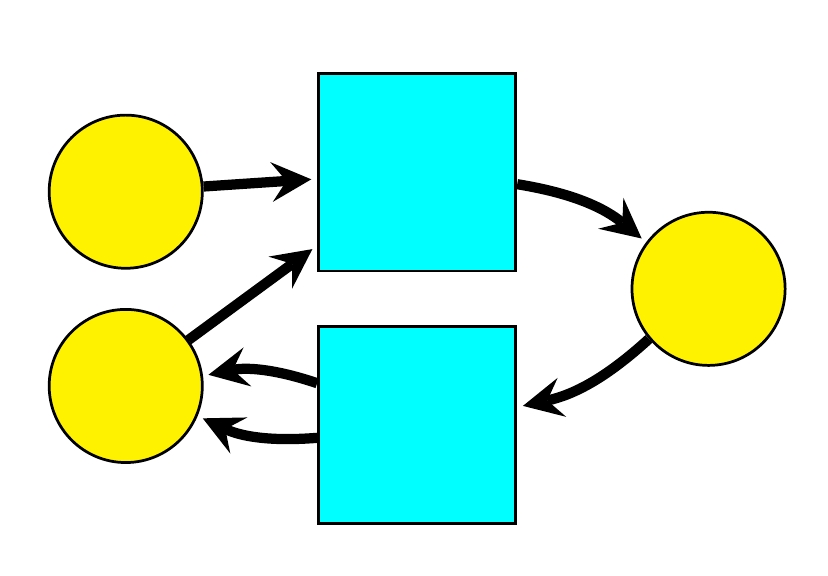
Each transition goes from a finite formal sum of places to a finite formal sum of places. Petri nets are used in computer science, chemistry and other disciplines to describe processes where finite collections of entities of different kinds turn into other such collections. Here we explore Petri nets as a source of interesting categories, monoids, posets and other structures.
Mathematically, a Petri net \(P\) can be seen as a way of presenting a free commutative monoidal category \(FP\): that is, commutative monoid object in \(\mathsf{Cat}\), which can be seen as symmetric monoidal category of an especially strict sort. We can then extract other structures from \(FP\). First, we can turn any category into a preorder, or by taking a skeleton, a poset. This process turns \(FP\) into partially ordered commutative monoid where \(x \le y\) iff there is a morphism in \(FP\) from the object \(x\) to the object \(y\). The question of explicitly computing this partial order for a finite Petri net is a famous problem in computer science: the "reachability problem".
Next, we can take any partially ordered commutative monoid and construct a commutative monoid by modding out by the smallest congruence containing \(\le\). This amounts to promoting inequalities to equations. Thus, Petri nets give presentations of commutative monoids.
Finally, given a partially ordered commutative monoid, we can form a commutative quantale. This can be seen as model of a fragment of linear logic where there are two notions of "and": a cartesian one and a noncartesian one. The interpretation of these in terms of "the logic of resources" is especially vivid for commutative quantales arising from Petri nets.